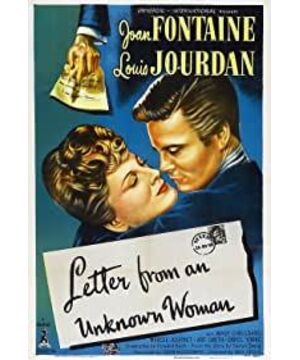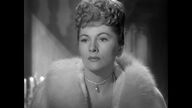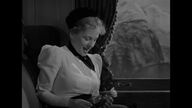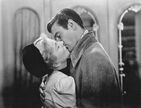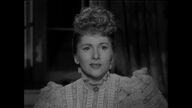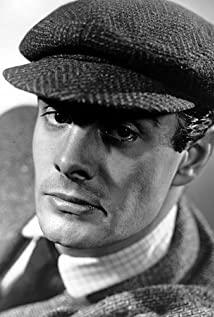The novel "A Letter from a Strange Woman" is a moving piece of literature. The author of the novel, Austrian writer Stephen Zweig (1881~1942), has "wrote a reputation in German as much as English and French" since the 1920s (Thomas Mann). This "Letter from a Stranger Woman" (1922) won an astounding award from Maxim Gorky. Gorky wrote to Roman Manland about this: "Stephen Zweig, the author of a book about you, is also the author of "A Letter from a Stranger Woman"? If so, please convey to him my opinion Sincere appreciation for this excellent short story. This work is excellent, and it deeply touched me." In his letter to Zweig, Gorky made no secret of his excitement when reading this novel: "... This short story shocked me deeply with its astonishing sincere tone, tenderness towards women and superhumans, originality of the theme, and bizarre expressive power that only real artists have. Reading this short story, I laughed with joy— —You wrote so well! Because of your sympathy for the heroine, because of her image and her sad heart songs, I was so excited that I couldn't control myself, and I cried without shame."
The film "Wushan Cloud" adapted from this is a successful example of fully mobilizing the audiovisual elements of the film and transforming literary symbols into an audiovisual ideographic system.
The French-German director Max Ophiers (1902~1957), who actively participated in the anti-fascist struggle, was forced to live in a foreign land in order to escape the claws of the Gestapo and came to Hollywood in 1940. The artist who "not let Hitler sleep peacefully" has been silent in the United States for many years, with few new works, and did not shoot five consecutive films until after the war. This film is the crystallization of all the experience and potential that Opheles has accumulated in the United States, and is a sign of his maturity in the transition from his youth to the age of confidence.
Opheles' adjustment of the original narrative level and careful construction of the image ideographic system constitute the film's unique style and two characteristics that are both faithful to the original and different from the novel literature. As far as narration is concerned, first of all, in order to make full use of the expressiveness and viewing effect of the film’s audiovisual image, the hero in the film is no longer the writer in the original novel, but the musician, so piano music, concerts, posters and theater encounters It became the organic plot and visualized background for advancing the story, replacing the main place where the hero and heroine met several times in the original novel-the restaurant. Secondly, the Pratt Park mentioned in the original work is expanded into a vivid love scene in the film, and it is also a symbol of morality: Liza and Stephen are sitting in a simulated carriage. The imaginary train does not rotate clockwise, but It is counterclockwise, as if to let Liza return to her childhood, back to the dream time more than ten years ago; let Stephen return to the youth of the flourishing youth and return to the glorious years of artistic career. However, in the real world, who can save the passing time? After the two accompany each other in the garden, they separated again; the lights went out, and the night was like ink; the past was like a marriage, and it was unbearable to look back...
In terms of the ideographic nature of the images, a series of real life scenes have been deliberately created by the poetic director Opheles to obtain unique expressiveness and deep connotations in the film, in the most common, familiar and dull things Contains another kind of taste and meaning. Stations, bird cages, stairs, crosses, swings, pianos, wilderness, trolleybuses... and other image themes are rendered with specific ideographic functions through repetition, highlighting and modeling, which constitute a key link in the overall film and arouse thoughts. traces of.
The film "Wushan Cloud" is an exploration of life existence. Thinking about life is also thinking about time, because the existence of life can be attributed to the existence of time. Time is difficult to grasp, but film art can arouse viewers to think about time, that is, to think about life experience, through the processing of time, the change of time, and the use of various time rhythms. Opheles’ film is a “movie of memory”, which leads to the existence of eternity from the perception of memory. The image directly reflects the consciousness of pursuing eternity, and with the help of the image we can relive the specific feelings we have experienced at a specific moment. The whole conflict of Opheles' works lies in the continuous double opposition between the past and the present. The letter from the beginning of the film and the scenes of the past shown by the images are of course the opposition between the present and the past, and the images that appear repeatedly also have the function of reminding time. For example, trolleybus. The trolleybus driving into the background of the screen has appeared three times: the first time when Liza saw Stephen’s furniture unloaded on the street, the tram whizzed past; the second time Liza saw the sticker on the outside of the carriage introducing Stephen Poster for the concert; the third time Liza hurried off the trolleybus and left the station desperately-she had just sent Stephen away. Ordinary trolleybuses integrated into daily life scenes become a symbol of passing time. When it appears for the third time, it must be reminiscent of the protagonist's past and the precarious years.
Trains, locomotives, carriages and sirens are symbols of destiny. The train rushed to the front mercilessly along the track. The train looked like a giant and dragged its rolling wheels. The whistle was like a prayer to the god of time. The carriage is the cage, the coffin of the deceased... Liza finally broke up with Stephen on platform 6, and sent away his son's coffin on platform 6. At the station, people waved their handkerchiefs to say goodbye, the smoke was filled, the lights were dim, and a bleak scene heralded the death of the exhausted Liza.
Liza has had desires and joys in her life. The director chose swinging, going up the stairs, and taking the imaginary travel train in Prater Park as symbols to reflect this pure desire and short-lived joy. Liza, who is swinging in the garden in front of the house, seems to have got rid of the boring daily life, ecstatic, immersed in the dream of the sound of the piano, dreaming of a girl's spring dream. The stairs as a symbol can express excitement and ascent. It is opposed to the horizontal railroad line like a prison railing, giving people the intuition of climbing upwards and breaking free of restraints. Liza hurriedly climbed up the stairs and came to the door of Stephen's house, precisely using the sloping line of the stairs from bottom to top to highlight the excitement. However, this scene still reminds people that the realization of the dream is temporary and incomplete: the stairs of the first level "dismember" the rising slope, showing the time limit of the structure of the rising slope, and the footsteps. The sound is close to the tick of a clock, as if measuring the time of life. The stairs still hinder the protagonist from flying freely. It symbolizes that all attempts to transcend the world will eventually come to nothing: the bird flies in the cage, and the dream of breaking free and flying free is still fettered by the "stairwell"! The scene depicting Liza and Stephen traveling by car in Prater Park is full of ideographical features. When the carriage reverses counterclockwise, the protagonist seems to be relived the old dream, the movement of the world seems to stop abruptly, the carriage shaped like a coffin is like a marriage bed, and it seems that desire and joy have overcome death. An imaginary trip symbolizes the joy of life. However, the director Opheles' treatment of this scene particularly emphasized the falseness of the setting. The "scenic spots" in Venice and Switzerland set in Prater Park are all artificially painted sets, with artificial snowflakes sprinkled on the ground. Can there be eternal joy in this false world?
The desire described by Orpheus is an instantaneous soap bubble: it is colorful, crystal clear and bright, but empty; the moment it floats into the air, it means that the fate of falling has come. The illusion of happiness is replaced by extreme emptiness and loss. Therefore, the contrast between the congested image and the empty lens is a clear contrast, which evokes a strong sense of loss: as soon as the waltz is over, the musician leaves the table, Stephen staying in the hall is alone, and then the candlelight goes out. It was pitch black, and the hall was empty; it turned into an empty theater with a constant stream of audience; in the early morning, the bustling street scene was connected to the scene of Liza running to Stephen's house alone at night and finding the door locked. ;At the end of the crowded coffee shop, only Liza was left sitting alone; the theater stairs were crowded, but when Liza walked down the stairs, she was hanging in shape...Opheles used montage to create "fullness" and "emptiness" Contrast. "Yingshi" is temporary, "emptiness" is eternal, emptiness is the only reality, and dreams will eventually be shattered. Orpheus once said: "Proms, music, theater boxes, champagne, uniforms, servants... everything has no practical value, it is empty. We show the audience these nothingness dressed up in disguise, for the sake of Make people aware of this, not to show anecdotes."
Noise and silence are also commonly used methods of contrast by Opheles.
Therefore, Opheles' films contain a unique lifting image structure that expresses the ups and downs of the characters' fate, joys and sorrows, and emptiness.
The general image of Liza's state of mind in a closed life circle with a birdcage can also be found. The image world created by Opheles reflects the artist's ideology and creative style.
View more about Letter from an Unknown Woman reviews


